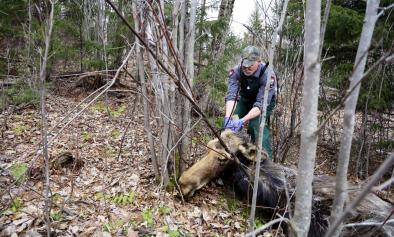There's a hidden consequence of climate change: A deadly virus that's killing key marine species

Climate change means melting ice and habitat loss for animals in the Arctic. But there's an invisible side effect of warming temperatures and rising tides, and it's killing key marine species.
Melting Arctic sea ice has opened new pathways for Arctic and sub-Arctic species to interact, and that contact has introduced a potentially deadly virus to mammals in the Northern Pacific Ocean, according to a new study in Scientific Reports.
Over 15 years, researchers identified two new channels linking the Atlantic and Pacific oceans between Russia and Alaska. Animals who live there are interacting for the first time, creating a reservoir of the deadly pathogen Phocine distemper virus.
The virus, also called PDV, was first identified in European harbor seals, killing thousands in 1988 and again in 2002. It reemerged in 2004, but this time in northern sea otters in Alaska.
It was surprising that the disease jumped to a different species in a different ocean, said study author Tracey Goldstein, associate director of One Health Institute at UC Davis School of Veterinary Medicine. It's what led scientists to believe that melting ice was to blame for the infection's spread.
"Animal health and human health and environmental health are so linked, if one deteriorates then the rest do, too," she told CNN.
Related Content



